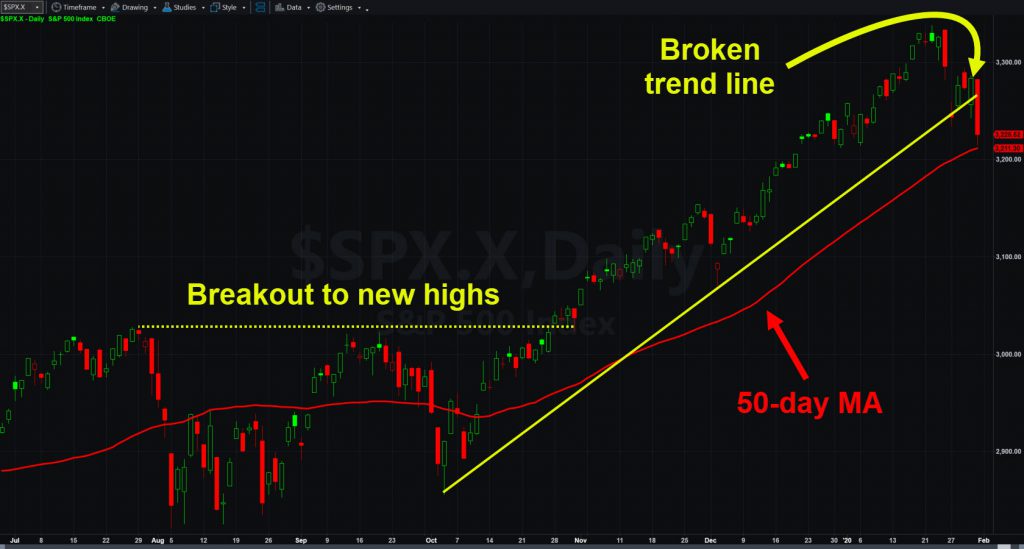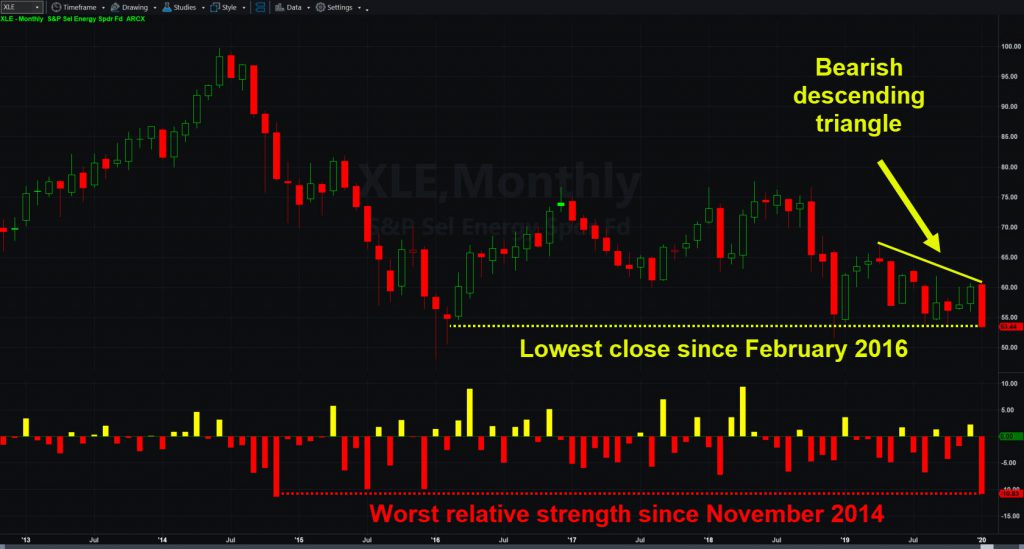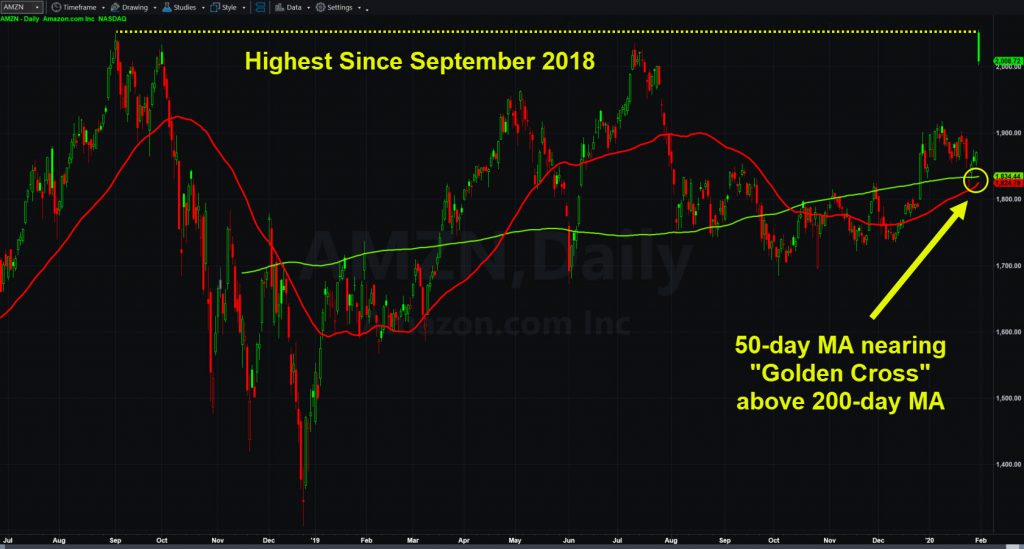Stocks just erased their gains for the year as China’s coronavirus outbreak triggered selling across the market.
The S&P 500 fell 2.1 percent between Friday, January 24, and Friday, January 31. It was the second straight losing week, and the biggest decline since the middle of last summer. The index is now fractionally negative for 2020 after being up as much 3.3 percent on January 22.
Selling intensified after the U.S. Centers for Disease Control issued its first mandatory quarantine since the 1960s. That lifted Cboe’s Volatility Index ($VIX.X) to its highest level since the rally began in early October. It also pushed the S&P 500 below its trend line, potentially representing a near-term shift in momentum.

Almost every major sector fell, led by energy. The oil market already faced a supply glut before the disease spread. It now faces the additional risks of slower economic growth and reduced air travel. Transportation companies and emerging markets also had their biggest weekly drops in over a year.
All told, four-fifths of the companies in the S&P 500 fell last week. The selloff came despite strong earnings from major technology companies like Apple (AAPL), Microsoft (MSFT), Amazon.com (AMZN) and Tesla (TSLA).
Pullback Follows Smooth Rally
The drop marked the end of a smooth four-month rally with almost no volatility. Optimism about U.S.-China trade and dovish Federal Reserve policy fueled that advance. The question now facing investors is whether the market has run out of positives — at least for now.
Chart watchers may identify several levels on the S&P 500 as potential support:
- 3211: The 50-day moving average, 14 points below Friday’s close.
- 3200: The index consolidated below this round number in mid-December before continuing higher.
- 3155: This peak from November 27 also would represent a retracement of approximately half the move since late-October.
Even though technical analysis can help spot these patterns, investors should watch headlines because no one knows how coronavirus will spread. Unlike typical catalysts like economics or earnings, this story is new and unpredictable.

The outbreak comes at an especially bearish time for energy stocks. January was their worst month relative to the S&P 500 since November 2014. The sector closed on Friday at its lowest level in almost four years. It also appears to be breaking the bottom of a descending triangle.
Traders may want to keep an eye on energy because crude oil futures (@CL) are trying to hold an important support zone between $50 and $52. A breakdown could trigger broader selling — especially after five years of consolidation around these levels.
The Fed and Interest Rates
Economists use energy prices to forecast economic growth and inflation. Cheaper oil could raise talk of a recession and depress interest rates further.
Speaking of interest rates, the Fed left its key rate unchanged last week. The meeting was a non-event, although the market’s starting to look for a rate cut as early as June.
Lower rates potentially hurt banks and financials. However, it’s a potential positive for housing stocks, utilities, precious metals and real-estate investment trusts.
Other economic news last week was mostly unimportant — especially because investors are now preoccupied with future events like coronavirus.
Big News for Big Tech
There was also a big news for big technology companies. TSLA rocketed 15 percent after quarterly results proved the electric-car pioneer proved it can turn a profit mass producing vehicles.
AMZN shot to new highs and flirted with a $1 trillion market capitalization after reporting strong earnings. AAPL and MSFT made similar moves. Facebook (FB), on the other hand, crashed on signs its business is stagnating.

International Business Machines (IBM) had a big news item: Gina Rometty resigned after eight years as CEO. The new boss, Arvind Krishna, is considered a leader in cloud computing. IBM leaped for the second time reporting strong numbers on January 21. Is the tech dinosaur finally turning around?
Within the S&P 500, L Brands (LB) and ServiceNow (NOW) had the biggest rallies last week. Retailer LB leaped 12 percent on news it may sell Victoria’s Secret. Software company NOW surged 9 percent after earnings and revenue beat estimates.
Xilinx (XLNX) found itself at the bottom of the ranking. The chip maker crashed 16 percent after guiding revenue lower and cutting its workforce.
Jobs Data, More Tech Earnings
This week is heavy on earnings and economic news.
Big items this morning include the Institute for Supply Management’s manufacturing index and construction spending. Alphabet’s (GOOGL) results are due after the closing bell.
Walt Disney (DIS), Chipotle Mexican Grill (CMG), Ford Motor (F), Seagate Technology (STX), Snap (SNAP) and Gilead Sciences (GILD) announce tomorrow.
Wednesday features ADP’s private-sector payrolls report and crude-oil inventories. Big earnings include General Motors (GM), Qualcomm (QCOM), Twilio (TWLO) and FireEye (FEYE).
Initial jobless claims come out Thursday, along with results from Uber Technologies (UBER), Twitter (TWTR), Activision Blizzard (ATVI), Baidu (BIDU) and Pinterest (PINS).
The week concludes Friday morning with the labor department’s non-farm payrolls report.


























